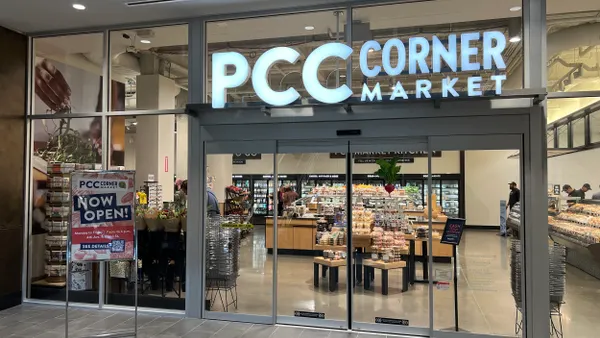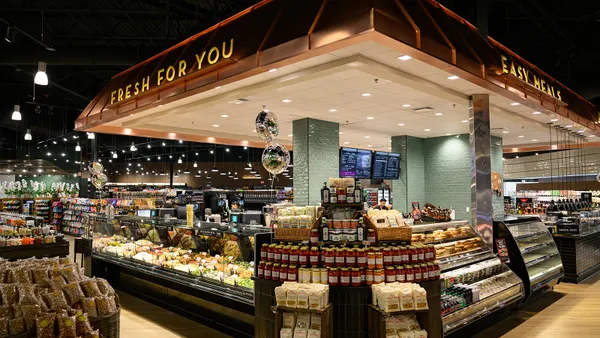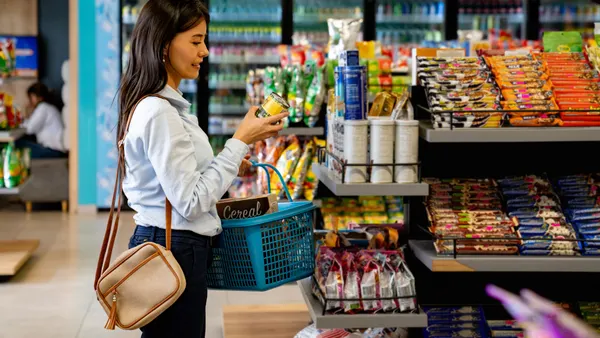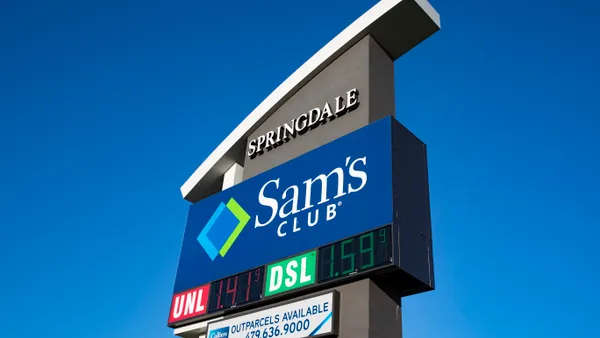Dive Brief:
- As restaurant sales heat up, grocers have the chance to boost their deli department and prepared foods to gain a competitive edge with shoppers seeking meals, according to a new report from the Food Industry Association (FMI).
- “The analysis suggests grocers are positioned to be the ultimate mealtime solution in that 39% of consumers view retail foodservice as a substitute for ... both a home-cooked meal and a restaurant meal,” Rick Stein, vice president of fresh food at FMI, said in a press release.
- However, grocers face a variety of challenges, both internally and from competitors like restaurants, to winning shoppers’ dollars. Expanding menu options, improving accessibility and being strategic about technology are among the suggestions for grocers in the new Power of Foodservice at Retail report.
Dive Insight:
Grocers are seeing the fresh perimeter rebound, with it accounting for almost 32% of sales in the first half of 2021, according to the report. But lack of awareness among shoppers that grocery stores offer meal solutions is a major hurdle: 35% of respondents — up from 32% in 2017 — said they don’t think grocery delis have viable meal options.
FMI’s findings indicate consumers still link retail foodservice with grocery shopping trips, with almost one-quarter of respondents saying they don’t want to make a visit just to the deli. Increasing options with a mix of semi-and-fully-prepared items, leveraging technology and expanding pickup or delivery options for prepared foods could help solve these challenges, FMI said.
The report, which is the sixth annual one for FMI and was prepared by 210 Analytics, is based on a survey of 1,518 U.S. shoppers, along with point-of-sale and panel data provided by NielsenIQ.
Survey respondents pointed out several areas where grocers can improve their offerings, including safety and sanitation, price and promotions, variety of options, and speed.
Access is another barrier, with urban shoppers more likely than rural ones to buy grocery deli-prepared foods. E-commerce could help address this, and the report explores preferences for people buying deli-prepared foods, with 36% of consumers saying they've used pickup and 32% saying they've used delivery. FMI says pickup seems to have stronger footing, especially with higher cross-population engagement, and that having a contactless option is important for both pickup and delivery.
Food safety and freshness are also top concerns for shoppers, with survey respondents saying they want to see use-by or best-by dates on items, FMI found. When it comes to food safety consumption, 61% of respondents said they feel confident eating packaged deli-prepared foods compared to 48% who said the same for self-service bars.
Prepackaged foods continue to gain traction with survey respondents, while shoppers expressed ambivalence toward self-serve sections following pandemic-induced closures because of health and safety concerns. Thirty-two percent said they would use salad and olive bars, while 39% said they maybe would. For cold and hot food bars, 28% would use them, while 44% are unsure.
While the report said shoppers want to see more sanitation efforts at self-service bars, only 6% would want these stations to close permanently.
As for boosting consumer knowledge about grocers’ meal solutions, new merchandising strategies could be key. More than 80% of respondents said they would like to see deli-prepared items in other spots around the store, like the produce department (40%), meat department (37%) and checkout area (24%).
Technology can also help grocers reach certain shoppers. For example, the report said 89% of baby boomers prefer to order from a person, while only 20% of Gen Z customers do. Meanwhile, shoppers pointed out ways grocers can improve their apps, with 57% looking for clarity on prices and 50% seeking deals for meals when buying deli-prepared foods.












